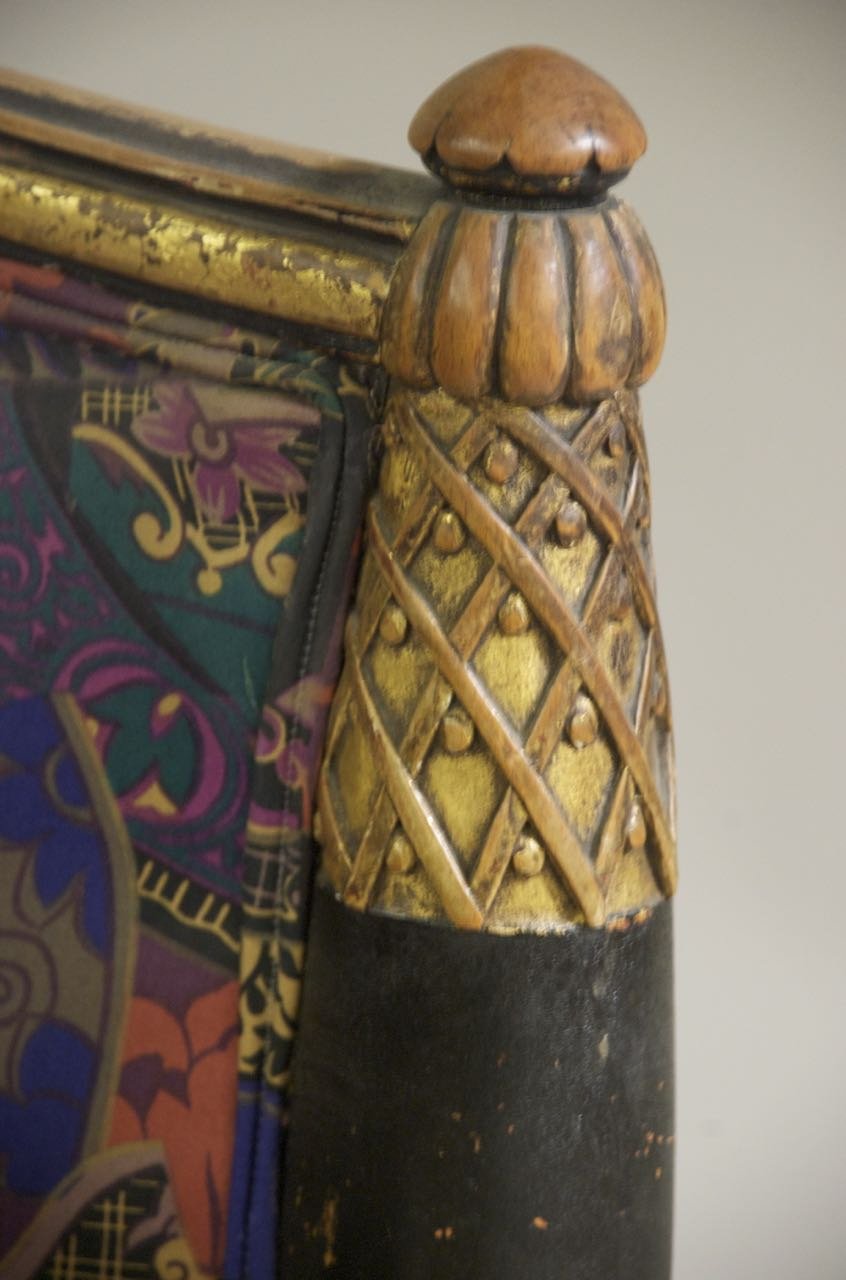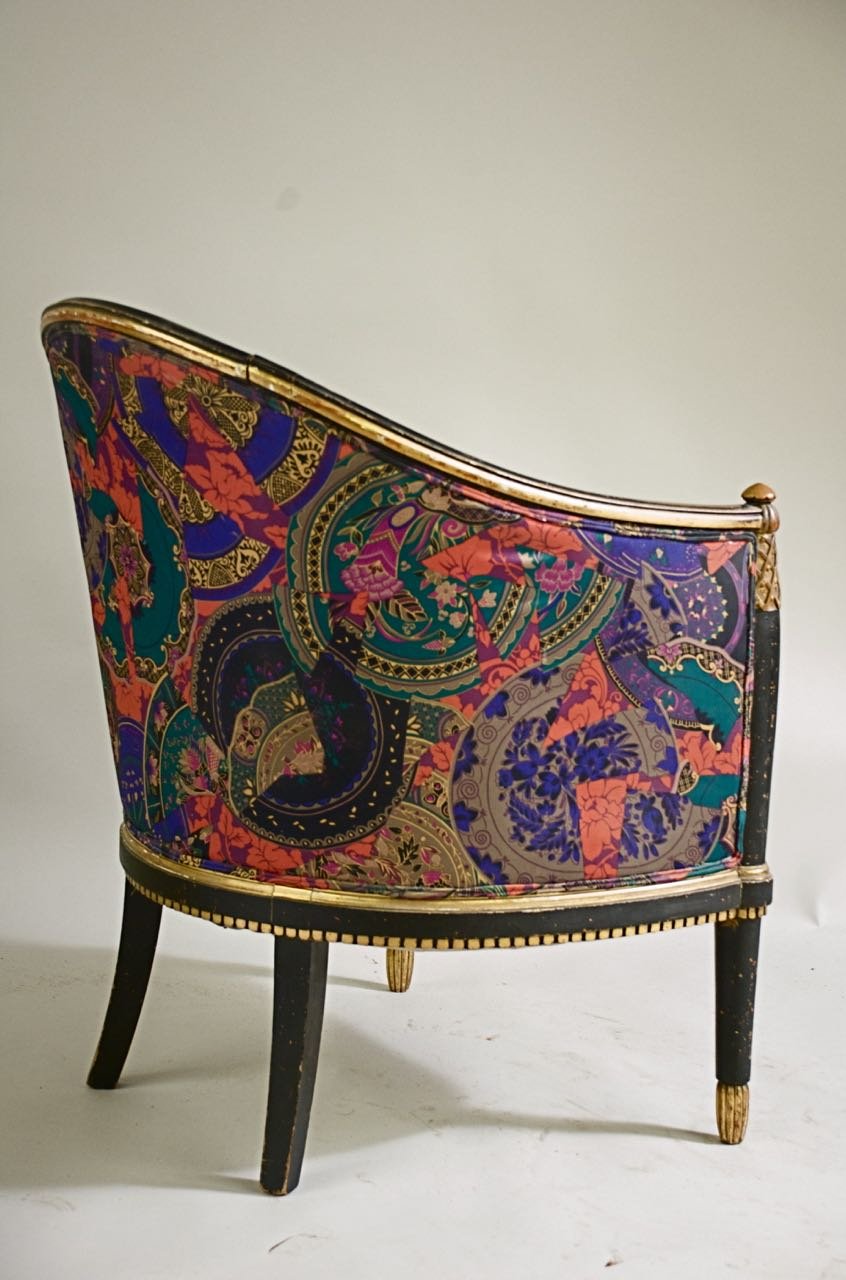 Image 1 of 8
Image 1 of 8

 Image 2 of 8
Image 2 of 8

 Image 3 of 8
Image 3 of 8

 Image 4 of 8
Image 4 of 8

 Image 5 of 8
Image 5 of 8

 Image 6 of 8
Image 6 of 8

 Image 7 of 8
Image 7 of 8

 Image 8 of 8
Image 8 of 8









Paul Follot seating suite/salon set (#1303)
Early Classic French Art Deco salon set/seating suite by Paul Follot. This suite consists of a settee and two armchairs. The suite is pictured in Le Mobilier du XXe Siecle by Pierre Kjellberg, page 226. Settee available separately. Pair of armchairs available separately.
The settee is approximately 54" wide.
Unrestored in the photographs.
Paris-born decorative artist and sculptor PAUL FOLLOT studied at Ecole Normale d'Enseignment du Dessin under Eugene Grasset. In his early graphic design work he was influenced by medieval and Pre-Raphaelite art. In 1901 he joined La Maison Moderne in Paris where he designed bronzes, jewelry and fabric. By 1904 he had become an independent artist. And by 1910 he had begun to seek des architectures calmes ('tranquil architecture') through the use of beautiful and rare materials, refined techniques and harmonious and balanced forms in what would emerge later as the Art Deco style.
His work was first shown at the 1902 Salon of Societe des Artistes Francais and he showed for many years at Societe des Artistes Decorateurs, Nationale des Beaux Arts and Salon d'Automne.
His illustrious career included teaching and theory, and he considered ornamentation an essential element of design and had no interest in the minimalism of Ie style 25. He rejected mass-production art in favor of the aristocratic tradition of luxury.
PLEASE NOTE THAT THIS SUITE IS UNRESTORED IN THE PHOTOGRAPHS. THE TABLE REFERRED TO HAS BEEN RESTORED.
Early Classic French Art Deco salon set/seating suite by Paul Follot. This suite consists of a settee and two armchairs. The suite is pictured in Le Mobilier du XXe Siecle by Pierre Kjellberg, page 226. Settee available separately. Pair of armchairs available separately.
The settee is approximately 54" wide.
Unrestored in the photographs.
Paris-born decorative artist and sculptor PAUL FOLLOT studied at Ecole Normale d'Enseignment du Dessin under Eugene Grasset. In his early graphic design work he was influenced by medieval and Pre-Raphaelite art. In 1901 he joined La Maison Moderne in Paris where he designed bronzes, jewelry and fabric. By 1904 he had become an independent artist. And by 1910 he had begun to seek des architectures calmes ('tranquil architecture') through the use of beautiful and rare materials, refined techniques and harmonious and balanced forms in what would emerge later as the Art Deco style.
His work was first shown at the 1902 Salon of Societe des Artistes Francais and he showed for many years at Societe des Artistes Decorateurs, Nationale des Beaux Arts and Salon d'Automne.
His illustrious career included teaching and theory, and he considered ornamentation an essential element of design and had no interest in the minimalism of Ie style 25. He rejected mass-production art in favor of the aristocratic tradition of luxury.
PLEASE NOTE THAT THIS SUITE IS UNRESTORED IN THE PHOTOGRAPHS. THE TABLE REFERRED TO HAS BEEN RESTORED.
